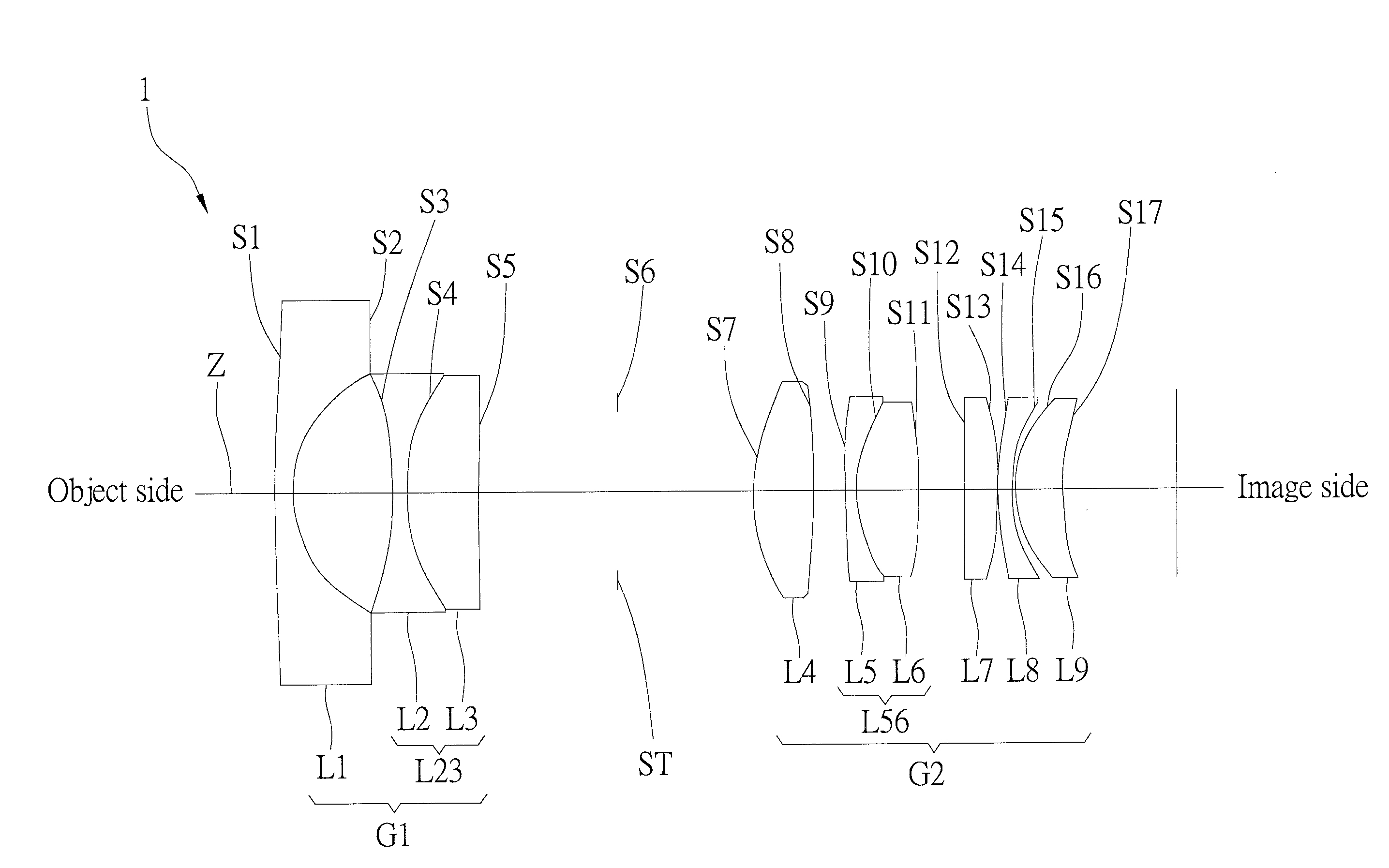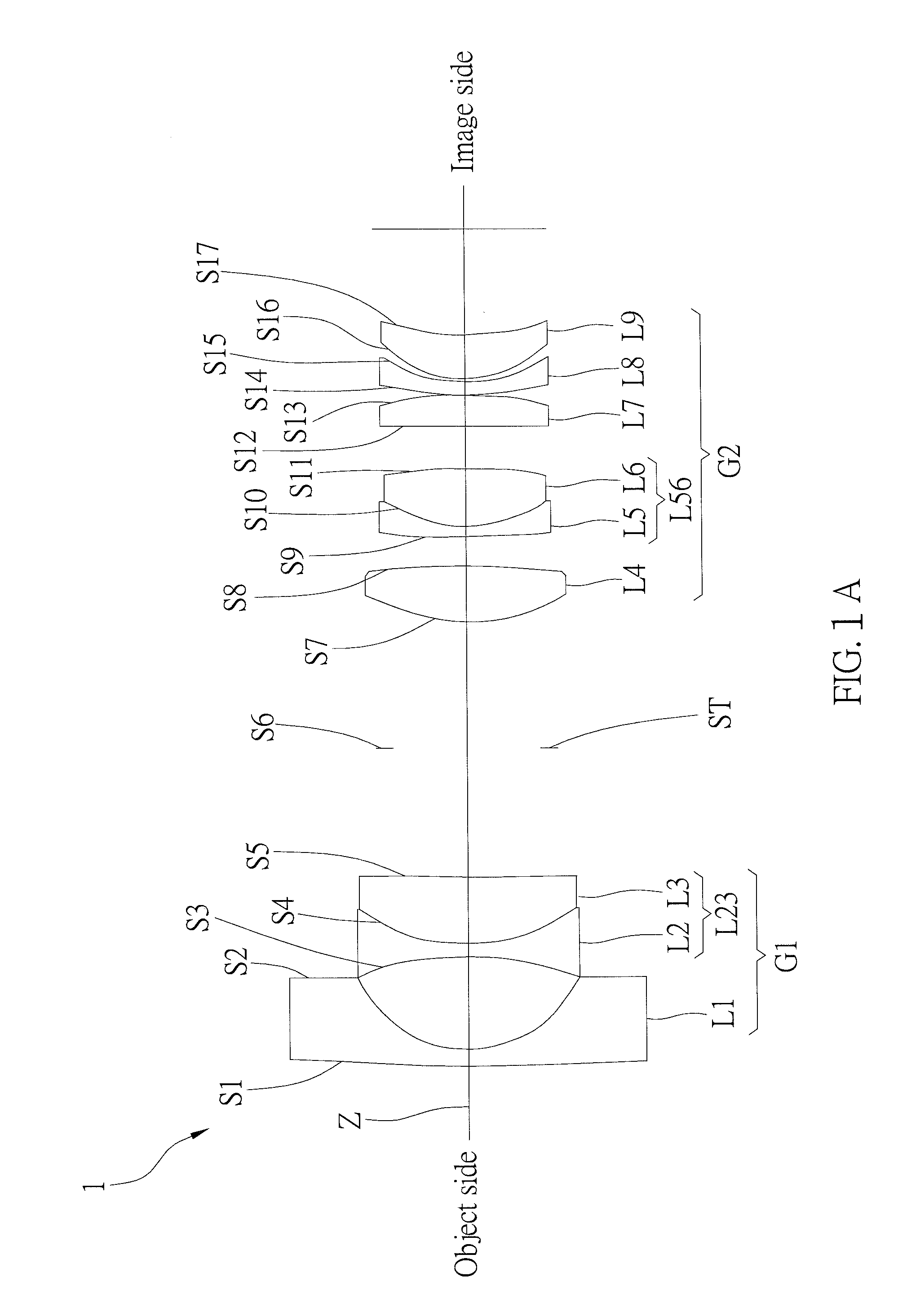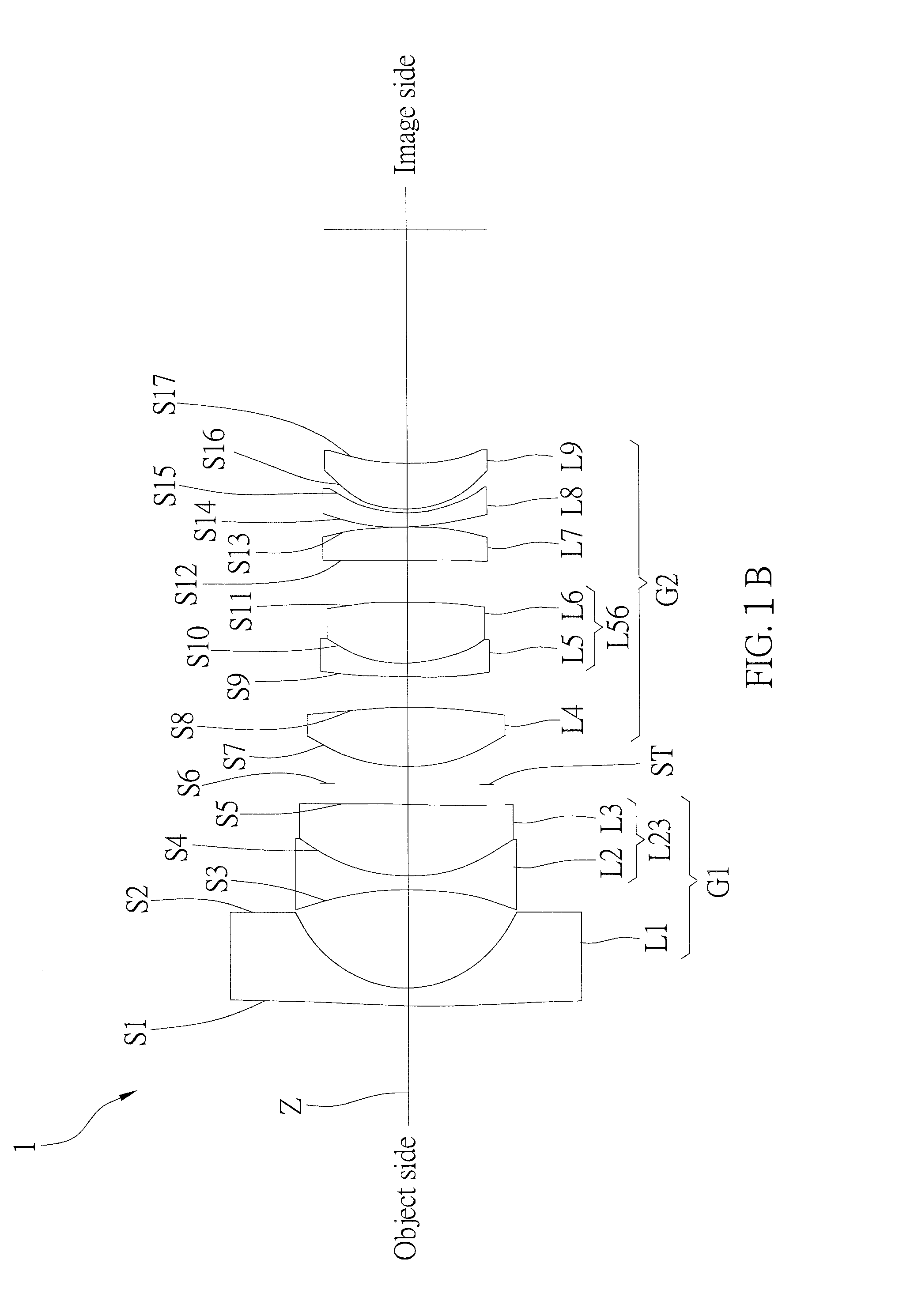Zoom lens
a zoom lens and zoom technology, applied in the field of zoom lenses, can solve the problems of poor sensitivity, increased manufacturing cost, and larger lens size, and achieve the effects of large aperture, high resolution, and large apertur
- Summary
- Abstract
- Description
- Claims
- Application Information
AI Technical Summary
Benefits of technology
Problems solved by technology
Method used
Image
Examples
Embodiment Construction
[0053]Zoom lenses 1-5 of the first to the fifth preferred embodiments of the present invention at a wide-angle end and at a telephoto end thereof are respectively shown in FIGS. 1A and 1B, FIGS. 3A and 3B, FIGS. 5A and 5B, FIGS. 7A and 7B, and FIGS. 9A and 9B.
[0054]Each of the zoom lenses 1-5 includes, in order from an object side to an image side along an optical axis Z, a first lens group G1, an aperture ST, and a second lens group G2. In addition, according to different requirements, the zoom lenses 1-5 can further include an optical filter provided at the aperture or between the second lens group G2 and the image side to filter out unwanted optical noise to enhance the optical performance Of course, the position of the optical filter can be changed to meet different design requirements, and is not limited by the above description.
[0055]The first lens group G1 has negative refractive power, and is composed of a first lens L1, a second lens L2, and a third lens L3 which are arrang...
PUM
 Login to View More
Login to View More Abstract
Description
Claims
Application Information
 Login to View More
Login to View More - R&D
- Intellectual Property
- Life Sciences
- Materials
- Tech Scout
- Unparalleled Data Quality
- Higher Quality Content
- 60% Fewer Hallucinations
Browse by: Latest US Patents, China's latest patents, Technical Efficacy Thesaurus, Application Domain, Technology Topic, Popular Technical Reports.
© 2025 PatSnap. All rights reserved.Legal|Privacy policy|Modern Slavery Act Transparency Statement|Sitemap|About US| Contact US: help@patsnap.com



